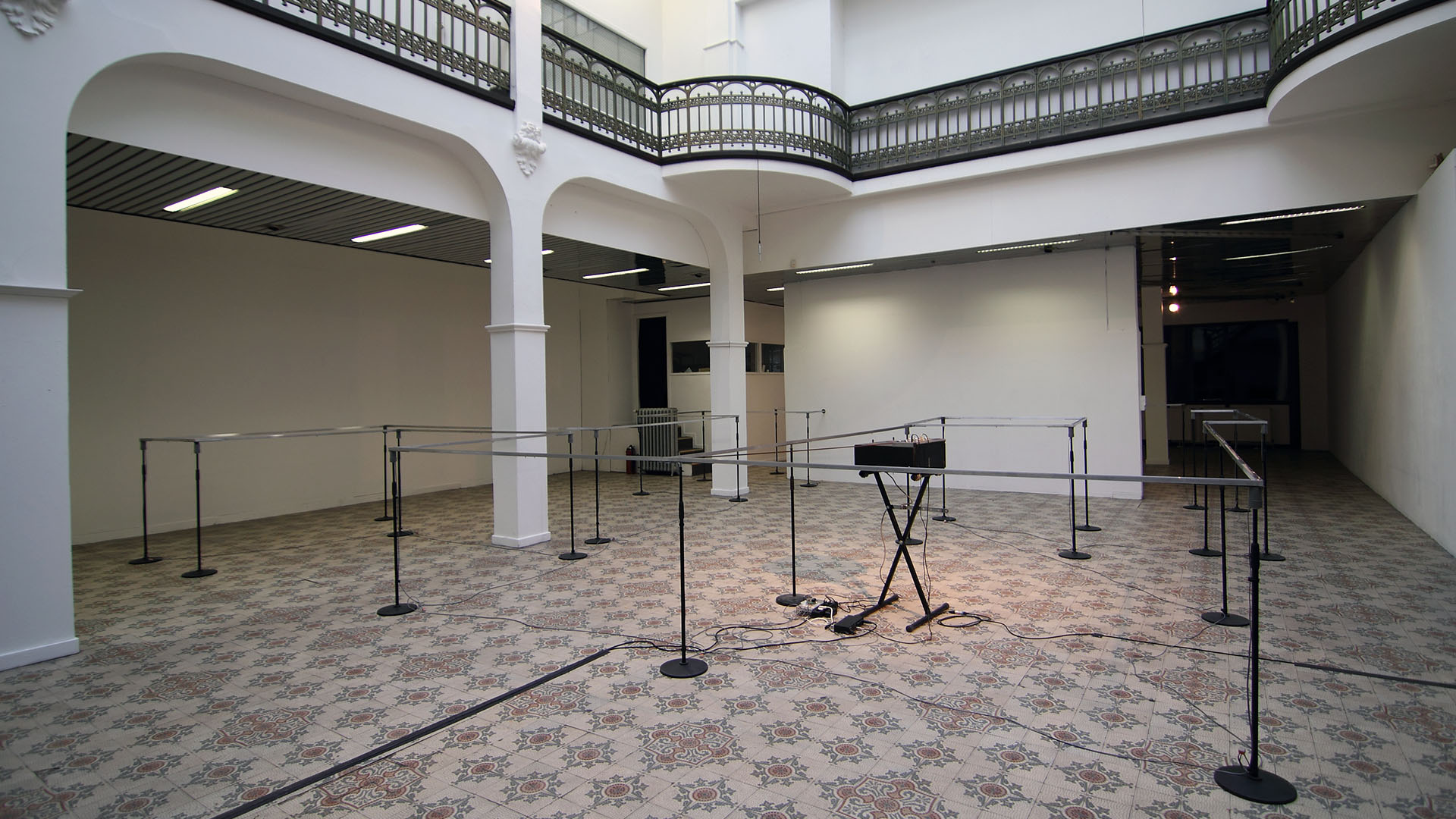
(swipe for text)
sound installation and listening space
Just before the independency of Senegal in 1960, the colonial power of France yielded, at Cap manuel in Dakar, a new courthouse. It is a typical kind of a modernistic, Corbusian approach of that time, where progressive ideas of enlightment and uplift ruled. French architects Daniel Babani (1914 - 2006) and Pierre Roux-Dorlut (1919 - 1995) were the designers of this concrete palace; a complex of courtrooms, office rooms, utility spaces and mezzanines.
After the independency the building remains in its original function but also changes into a monument, one of a past, coloured by western influence and power.
Recently, long after the courthouse lost its original function, the building serves as a stage for African contemporary art at the Dak'Art biennial.
At first, the western-colonial initiative to build the courthouse according to imposed western standards and the issues of post-colonial identity consequential to that, which questions the significance (more).
Following to that the withdrawal from public life and decay and finally, the promotion to one of the major stages of contemporary art in Africa, mostly shaped by African artists from the Diaspora, mainly to western countries. This transformation throughout these years of existence, became manifest in the building itself, its direct environment, the African context and beyond.
The work 'Dock / Ancien Palais de Justice' raises questions within the debate of the western and the non-western art discourse by the appropriation of archetypes, symbols and signs and the inclusion of a multiplicity of perspectives.
The installation 'Dock / Ancien Palais de Justice' invites the visitor to walk around in a construction, based upon the original floor plan of the old courthouse. This is indicated by microphone stands and running audiotape, which links the resonance of a past to recorded sounds of today. The installation records ongoing the sounds of the visitors and brings it into circulation via the audiotape. It takes around 15 minutes to loop. The technique is based upon 'I'm sitting in a room' by Alvin Lucier.
The ideas on habitat and identity, colored in a personal human environment, and how it changes when the situation is transitional, opened up ways to invite a number of sound artists to compose a dedicated soundscape for this project. A listening space is equipped with a surround installation to serve a spatial experience of these contributions.